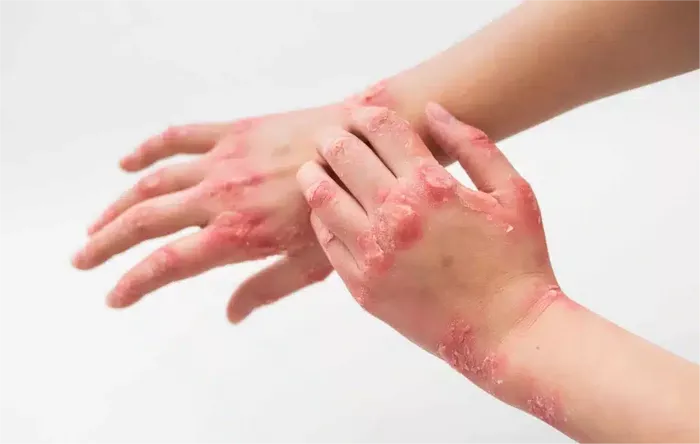Ringworm, despite its misleading name, is not caused by worms but rather by a group of fungi known as dermatophytes. This common fungal infection can affect the skin, scalp, and nails, causing discomfort and, in some cases, significant distress. Understanding the various types of ringworm is essential for accurate diagnosis, effective treatment, and prevention of spread. In this comprehensive guide, we delve into the nuances of ringworm, exploring its different types, symptoms, and treatment options.
1. Tinea Corporis (Ringworm of the Body)
Tinea corporis, commonly known as ringworm of the body, affects the skin on various parts of the body except for the scalp, groin, and feet, which have their specific names. It typically presents as red, scaly patches with distinct borders and may be accompanied by itching or burning sensations. These patches often expand outward while clearing up in the center, giving them a ring-like appearance, hence the name “ringworm.” Tinea corporis can be transmitted through direct contact with an infected person or animal, as well as through contaminated objects such as towels or clothing.
2. Tinea Capitis (Ringworm of the Scalp)
Tinea capitis is a fungal infection that affects the scalp and hair follicles. It is most commonly seen in children, although adults can also be affected. Symptoms of tinea capitis include hair loss, scaling, and red, itchy patches on the scalp. In some cases, there may be the formation of pus-filled lesions or swollen lymph nodes in the neck. Tinea capitis is highly contagious and can spread through direct contact with an infected individual or by sharing personal items such as combs, brushes, or hats.
3. Tinea Cruris (Jock Itch)
Tinea cruris, commonly referred to as jock itch, affects the groin area and inner thighs. It is more prevalent in males and often occurs in individuals who sweat excessively or wear tight clothing. Symptoms of tinea cruris include redness, itching, and a rash that may spread outward in a ring-like pattern. The affected skin may also become scaly or flaky. Poor hygiene, dampness, and friction in the groin area contribute to the development and spread of tinea cruris.
4. Tinea Pedis (Athlete’s Foot)
Tinea pedis, also known as athlete’s foot, is a common fungal infection that affects the feet, particularly the spaces between the toes and the soles. It is characterized by itching, burning, and peeling skin, often accompanied by redness and blistering. Tinea pedis thrives in warm, moist environments such as sweaty socks and shoes, locker rooms, and public swimming pools. It can spread through direct contact with contaminated surfaces or by sharing footwear or towels.
5. Tinea Unguium (Ringworm of the Nails)
Tinea unguium, or ringworm of the nails, affects the fingernails and toenails, causing them to become thickened, discolored, and brittle. The nails may develop white or yellow patches, and in severe cases, they may crumble or detach from the nail bed. Tinea unguium is often a chronic condition that is challenging to treat and may require long-term antifungal therapy. It can spread from one nail to another or to other individuals through direct contact or sharing of nail grooming tools.
6. Tinea Barbae (Barber’s Itch)
Tinea barbae, commonly known as barber’s itch, is a fungal infection that affects the beard and facial hair follicles. It presents with red, itchy patches and pustules, often accompanied by hair loss and crusting. Tinea barbae can occur in individuals who shave regularly, as shaving can create microabrasions in the skin, providing an entry point for fungal infection. It is more prevalent in men and can be transmitted through direct contact or sharing of contaminated grooming tools.
7. Tinea Versicolor (Pityriasis Versicolor)
Tinea versicolor, also known as pityriasis versicolor, is a superficial fungal infection that affects the skin, causing patches of discolored, scaly skin. These patches may be lighter or darker than the surrounding skin and can vary in size and shape. Tinea versicolor is more common in adolescents and young adults and tends to occur in areas of the body with high sebum production, such as the chest, back, and shoulders. Warm, humid climates and excessive sweating can exacerbate the condition.
Treatment and Prevention
Treatment for ringworm typically involves topical or oral antifungal medications, depending on the severity and location of the infection. Topical treatments may include creams, lotions, or shampoos containing antifungal agents such as clotrimazole, miconazole, or terbinafine. Oral medications such as fluconazole or griseofulvin may be prescribed for severe or persistent cases or those involving the scalp or nails.
In addition to medication, proper hygiene and prevention strategies are crucial for managing and preventing ringworm infections. These include:
Keeping the affected area clean and dry
Avoiding sharing personal items such as towels, clothing, and grooming tools
Washing hands thoroughly after touching or treating infected areas
Wearing clean, breathable clothing and changing socks and underwear daily
Avoiding tight-fitting clothing and shoes, especially in warm, humid environments
Treating pets for fungal infections and preventing them from coming into contact with humans or other animals if infected
Conclusion
In conclusion, ringworm encompasses a spectrum of fungal infections that can affect various parts of the body, including the skin, scalp, and nails. Understanding the different types of ringworm, their symptoms, and treatment options is essential for accurate diagnosis and effective management. By practicing good hygiene and prevention measures, individuals can reduce their risk of contracting and spreading ringworm infections, promoting skin health and overall well-being.























